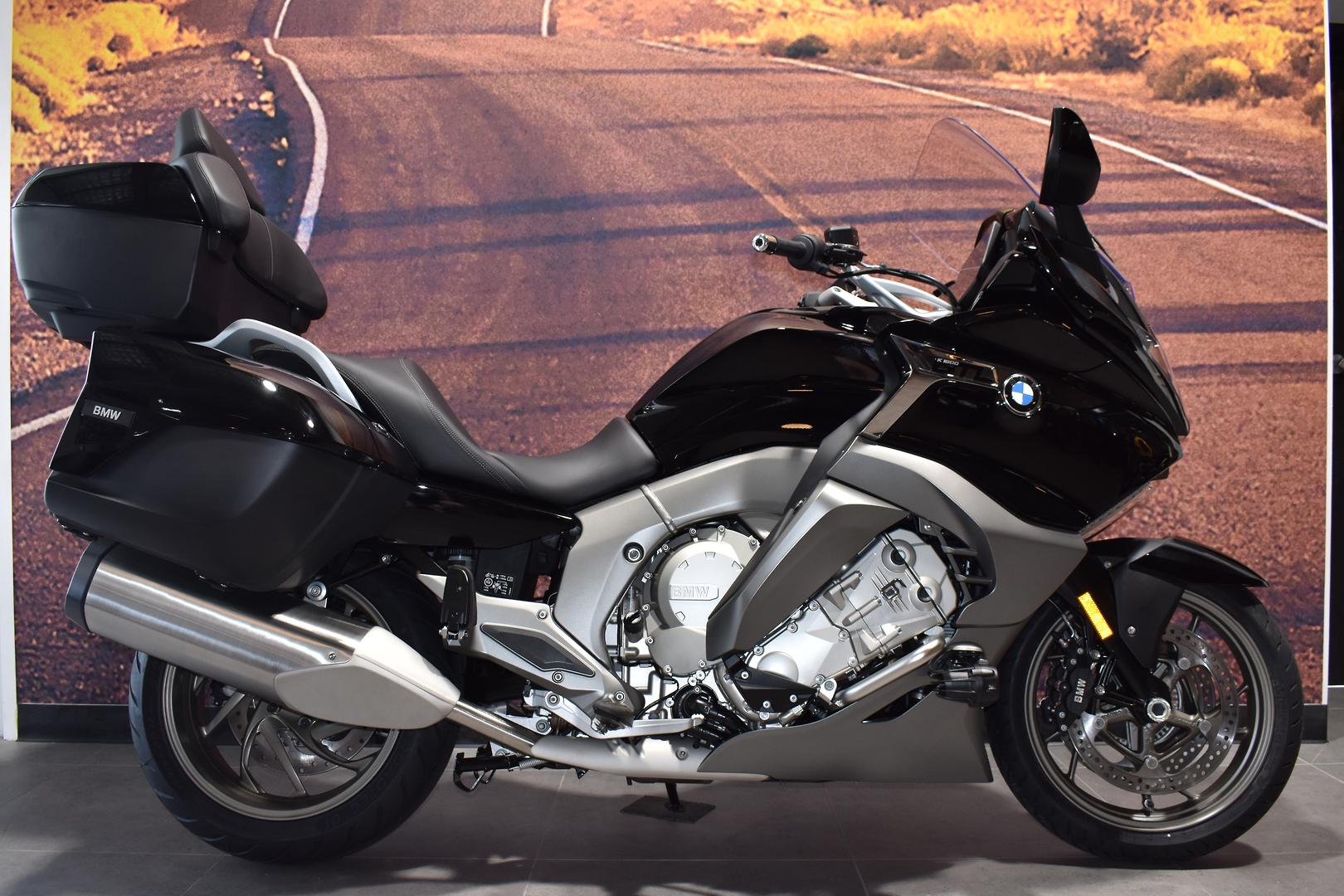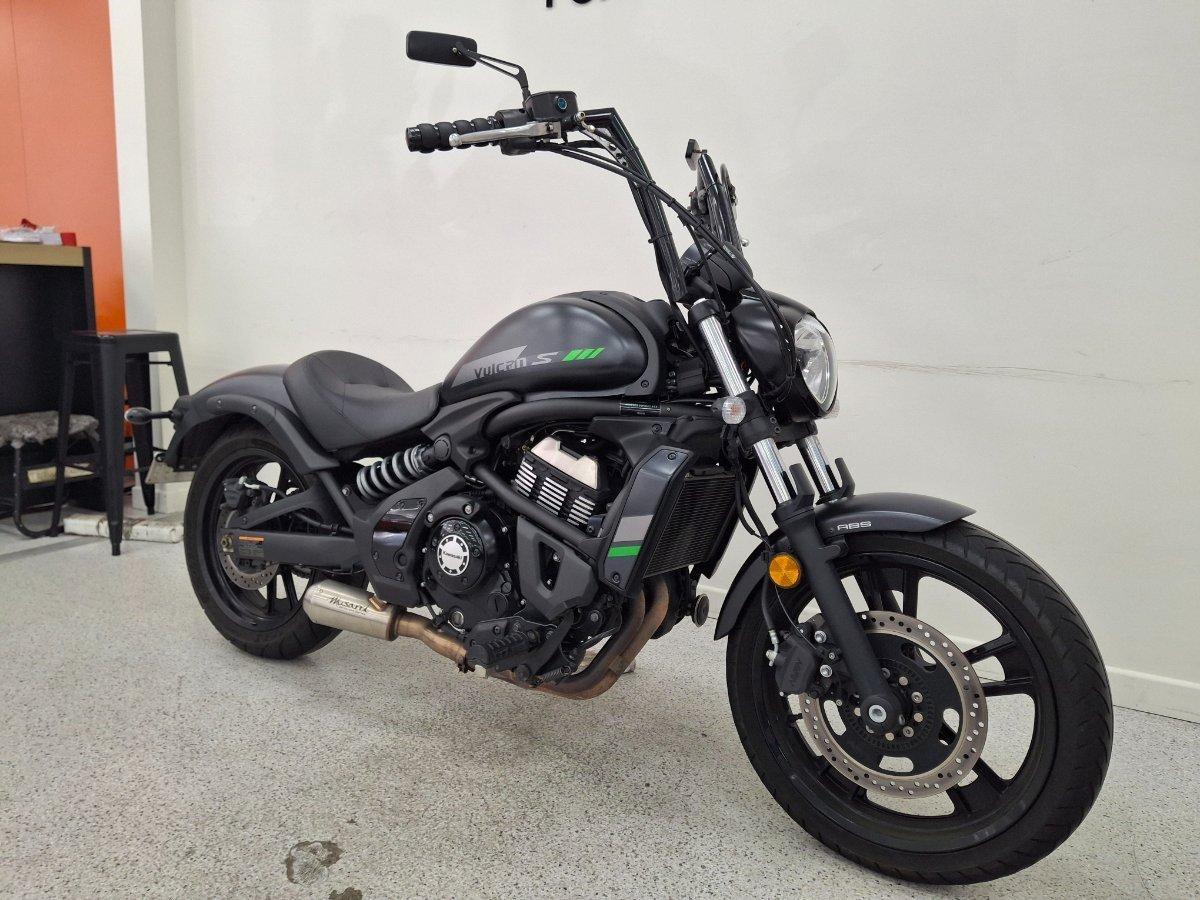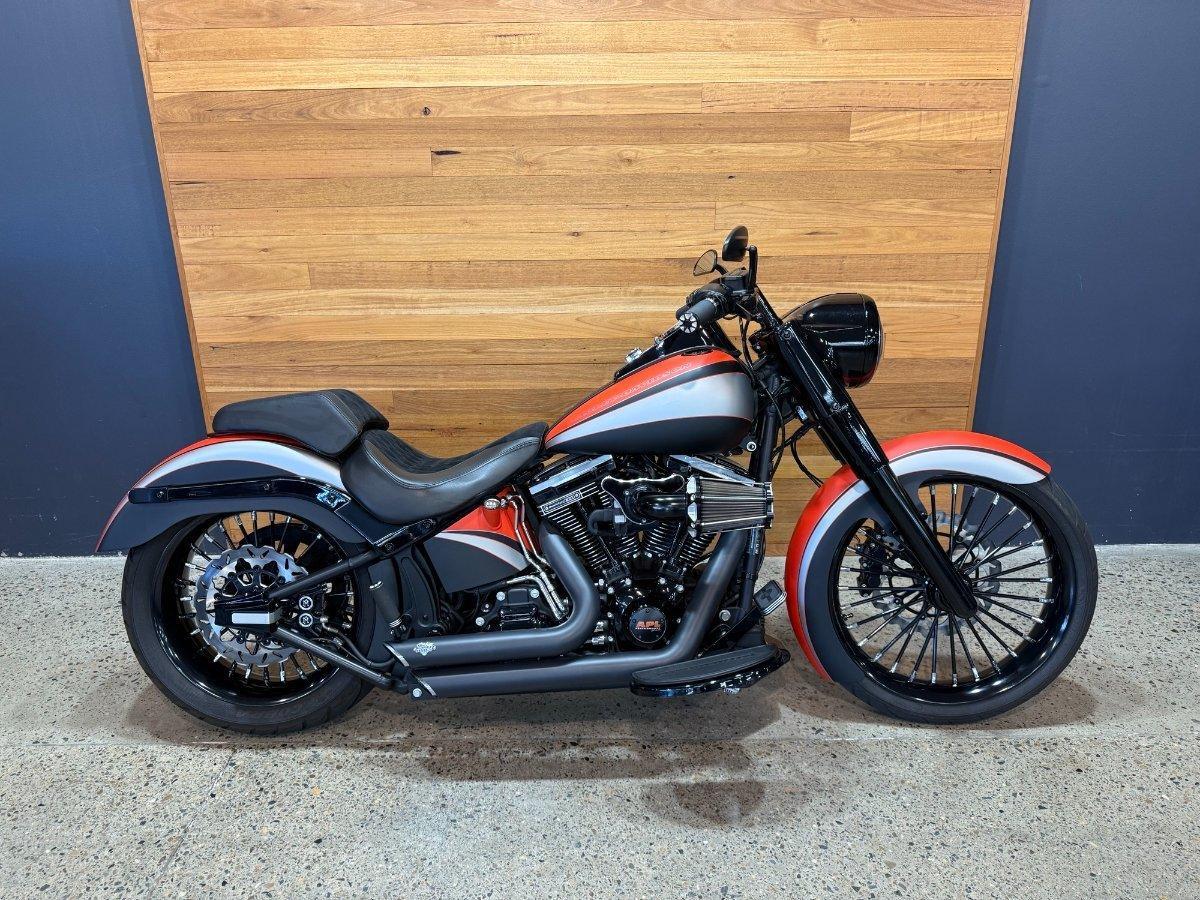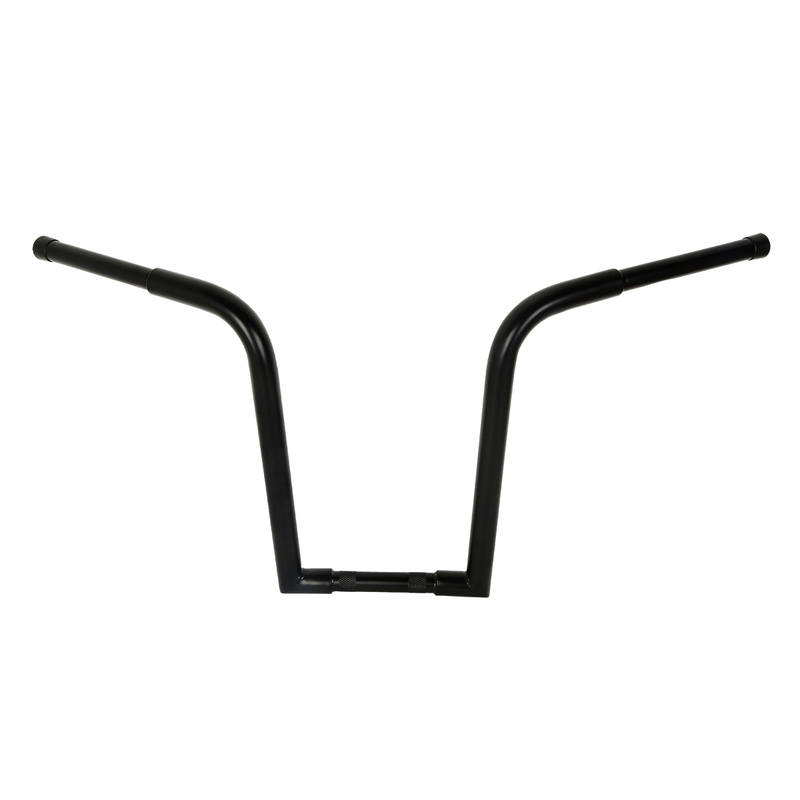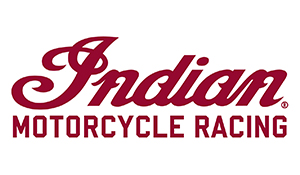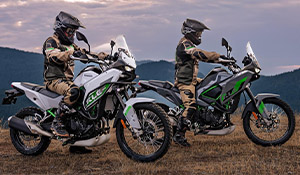FEATURE - Royal Enfield Project Delta
Words: Mike Ryan
Photos: Courtesy of Royal Enfield

If Royal Enfield gave you a brand-new Super Meteor 650 and told you to build whatever you want, what would you do? For Queensland-based Purpose Built Moto, the response was to produce an incredible custom bike. Combining modern fabrication techniques with vintage styling, ‘Project Delta’ taps into several periods of motorcycle history, as well as Royal Enfield’s own heritage.

If you’re unfamiliar with Purpose Built Moto, they’ve been in the business of designing and building custom motorcycles for the past eight years, with an archive of creations that numbers more than 50. Additionally, Purpose Built Moto provide motorcycle mechanical and electrical services, along with a range of aftermarket parts. Their ‘Black Box’ electronic control module featured in JUST BIKES a couple of years back, while other products in the range include bar-end mirrors, headlights, gauges, indicators, air filters, levers and grips. They also offer replacement lighting and switchblock kits, and even scrambler conversion kits.
While the accessories and servicing side of the business is important, it's the custom builds that have brought wider attention to Purpose Built Moto, and what led Royal Enfield to come knocking early last year.

A Simple Brief
Tom Gilroy, founder and chief fabricator at Purpose Built Moto, says his builds are always the result of deep and detailed conversations with the customer. Before a spanner is turned or oxy torch is sparked up, Tom will find out what sort of bikes the client likes and the riding they intend to do, so the resulting motorcycle is best suited to them – a tailored approach, if you will.
Café racers, bobbers and scramblers have been recurring styling themes for Purpose Built Moto, but that tailored approach means choppers, brat racers, street trackers and a few creations that defy categorisation have also rolled out of their Gold Coast workshop. This diversity, along with the quality of their finished product, is what drew Royal Enfield to commission them for a special build, based on the Super Meteor 650 cruiser.
Royal Enfield’s brief was simplicity itself: “Do whatever you want - just let us know when you’re done”. Such creative freedom is liberating, but it can also be daunting and prompt a lot of questions. What should the theme be? Where do you ‘start’ and ‘stop’ with ideas? How far can you take the bike’s customisation before it loses its Royal Enfield identity and becomes something else entirely?
Rather than be overwhelmed by this open brief, Tom and his team were inspired, using the opportunity to push their skills in design and fabrication. At the same time, a respect for Royal Enfield’s history and brand image would influence the design.

Royal Enfield’s brief was simplicity itself: “Do whatever you want - just let us know when you’re done”. Such creative freedom is liberating, but it can also be daunting and prompt a lot of questions. What should the theme be? Where do you ‘start’ and ‘stop’ with ideas? How far can you take the bike’s customisation before it loses its Royal Enfield identity and becomes something else entirely?
Rather than be overwhelmed by this open brief, Tom and his team were inspired, using the opportunity to push their skills in design and fabrication. At the same time, a respect for Royal Enfield’s history and brand image would influence the design.

Fleas and Fifties
Four key criteria were established for the project – Weight Reduction, Showcasing the Engine, a Vintage Aesthetic and Capturing Royal Enfield’s Heritage.
With more than 120 years of history, Royal Enfield have plenty of heritage to tap into, but Tom found himself drawn to the original Super Meteor 700cc twin from the 1950s, as well as the ‘Flying Flea’ 125cc single (officially the WD/RE) used by Allied forces in World War II. The OG Super Meteor inspired the approach of accenting the engine, and a girder fork front end in the style of the Flying Flea would provide the required vintage look. But there was room to move within these elements.

“Our builds always evolve in design and function as the build progresses,” Tom explains. “We start with a concept, an idea and sometimes a few definite inclusions and build from there.”
In April, 2024, work got underway on what would be labelled ‘Project Delta’. The name was inspired by Purpose Built Moto’s triangular logo - taken from ‘delta’ in the Greek alphabet - which Tom says signifies change and forward motion.

New Bones, New Rear
To meet Project Delta’s first criteria of reduced weight, things like the front and rear mudguards, side covers, seat and other cruiser-friendly touches were the first to be removed, but much more was to come.
The Super Meteor 650 was not only stripped to the bone, many of those “bones” were removed entirely. Only the backbone, steering head and swingarm pivots were retained from the factory frame - even the steering head bracing was cut-out and replaced with slimmer gussets.
“When my grinder comes out, I do get a little excited,” Tom jokes. “We removed a lot of what was there, because the simpler I can make a motorcycle, the better it’s going to be.”

Removing that visual and physical bulk required several all-new pieces to be fabricated, starting with the frame downtubes. In an appropriate vintage touch, these tubes now carry the oil, now carry oil for the air-oil engine cooling, allowing the factory oil cooler to be deleted. Ridges machined into these tubes provide some degree of cooling for the oil-in-frame set-up, with this detail carried on to a support brace for the swingarm.
The bespoke swingarm, which converts the factory twin shock rear suspension to a monoshock, accommodates a custom-built Nitron coilover unit. The loads going through this necessitated new frame bracing to be added, along with new swingarm pivots and suspension mounts. The finished article is estimated to be around 12kg lighter than the factory swingarm and rear suspension.
A bespoke solo seat sits above this and has only a wafer of padding, which Tom says is all about creating an authentic riding experience: “We want you to feel the motorcycle when you’re riding. A bobber-style seat with minimal padding keeps you closely connected, so you get instant feedback from the machine.”

From Tele to Girder
The standout element of Project Delta’s transformation is undeniably its girder fork front end. If your memories of girder forks are those bulky “industrial” units fitted to big British singles and twins, look up the original Flying Flea and you’ll see this suspension configuration can be elegant. The girder fork on Project Delta follows this pattern, with slim tubes that seem to flow like liquid from the steering head.
“Creating a girder front end is something that was directly inspired by the Flying Flea,” Tom says. “When those models first came out, they had this really beautiful front end. I wanted to take that and add my own touch to it.”
CAD was used to work out the rake, trail and range of suspension travel before the all-steel front end was made. Using a mix of tube and plate steel, the girder fork features stainless steel linkages with roller bearings, while the actual shock is an air suspension unit taken from a mountain bike.
As with the bespoke rear suspension, the girder fork front end saves weight compared to the factory telescopic forks and triple trees.

New Tank and Tinware
None of the Royal Enfield factory tinware was retained for Project Delta, with replacements either made from scratch or modified from aftermarket stock by Purpose Built Moto.
The tank was inspired by the C1950s Super Meteor, but scaled down to ensure the engine remains a focal point of this build.
“Cody, our in-house fabricator, took on the challenge of shaping the aluminum tank,” Tom explains. A foam buck, then paper template was produced before the finished article was handmade from aluminium.
"Each side was carefully hammered and planished until the contours matched our design," Tom adds.

The fuel pump resides inside this tank, allowing the 650 twin’s fuel injection to operate effectively without impacting the bike’s aesthetic.
The rear mudguard was modified from a generic aftermarket guard, incorporating a subtle lip at the trailing edge, with curved struts holding it in place. The vintage-look tail light - the prototype of a product that's now available from Purpose Built Moto - complements a small LED headlight that’s nestled into the girder fork front end.

New Wheels and Brakes, Too
In terms of size, style and weight, the Super Meteor 650’s alloy wheels were unsuited to the aesthetic of Project Delta. As such, Purpose Built Moto commissioned a pair of clincher-style spoked rims that increase the factory size from 19- and 16-inch to a 23- and 19-inch combination.
These spoked rims are laced up to special hubs and feature single brake discs at each end with Discacciati calipers.

Factory Power – with a Twist
As the Super Meteor 650 engine already has a vintage look, it was unmodified internally and left largely untouched internally, bar the addition of velocity stack intakes. Tom had these brass units machined by a small workshop he found by chance while in Greece. At the outlet end, an all-new stainless steel exhaust system was fabricated in-house, incorporating slim silencers in a fishtail look. Like other elements of this build, these were designed to enhance the engine.
The battery and electrics (including a Purpose Built Moto Black Box ECM that allows wiring to be minimised) sit behind the engine, under a cover that carries the Purpose Built Moto logo.

Like the 650 twin, the Super Meteor's six-speed transmission is untouched internally, but its method of activation has been altered radically.
Adding a hand-shifter suits Project Delta’s vintage aesthetic perfectly, while incorporating a pivot point into the nearside engine cover is a very clever touch. Testing saw the shape and position of this shifter altered before completion, but the ‘reverse’ clutch lever remains and reflects the lever configuration for the front brake. Both use assemblies from Kustom Tech.
Project Delta’s handlebar is a one-off, which Tom says was inspired by a 1951 Royal Enfield Bullet 350 he’d worked on. Switchgear is minimal and wiring is hidden, while a Daytona 48 speedo and Gamma Micro indicator display (both of which are stocked by Purpose Built Moto) sit under the handlebar, keeping the control area looking clean.

Black and Bold
To ensure the polished and detailed Royal Enfield engine was showcased at its best, black paint for the frame, tank and tinware was the obvious choice: “Our paint design needed to be simple, letting the fabrication and design work do the talking and letting the shape of the bike shine,” Tom explains.
There was space here for some flourishes, though, including red pinstriping and gold leaf accents to pick up on those brass velocity stacks.

Justin at Popbang Classics, a collaborator on previous Purpose Built Moto projects, handled the paintjob, with the black coated in several layers of clear to give a high-gloss finish.
The choice of red for the pinstriping was inspired by the Cherry Red leather on the seat, grips and shifter handle. Timeless Auto Trim, another Purpose Built Moto collaborator, completed this part of the build, which included adding laser-etched Royal Enfield logos to the seat.
Looking at Project Delta, there are some obvious bobber touches, but you can also see elements of board track racers and land speed record setters from a century ago. For this writer, the mix of brass, gold and vintage red leather gives this bike a bit of a steampunk vibe, too.

Pure Motorcycling, Made Purer
You’d think that making a fork and swingarm from scratch (and making them work) would be the toughest part of taking Project Delta from idea to reality, but Tom says otherwise: “Creating a concept that would satisfy both my creative intent and properly represent Royal Enfield was the biggest challenge.”
Completed in November, Project Delta has created a lot of attention and well-deserved praise for Purpose Built Moto since its official unveiling in March.
“Project Delta is both the culmination of a design DNA I've developed over the last eight years and a stake in the ground for Purpose Built Moto moving forward,” Tom says.

As all Purpose Built Moto creations are built to be ridden, it begs the question of how Project Delta performs on the road, especially given the weight reduction from the factory 241kg to an estimated 157kg.
“You sense how the lighter frame transforms the power-to-weight ratio,” Tom explains. “The twin feels punchy off the line, the hand-shift adds an element of rider engagement, and the girder fork provides unique steering feedback that’s both nostalgic and surprisingly stable.
“Winding it through the hills, watching the girder suspension work, feeling the monoshock and the new swingarm we’ve built operate underneath you - that’s the symphony of mechanical parts talking to each other and delivering that ride experience.”
Thanks to Tom at Purpose Built Moto for additional information used in this article. For more details on Project Delta, along with a gallery of previous builds, go to: purposebuiltmoto.com


